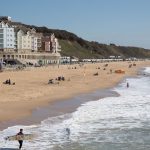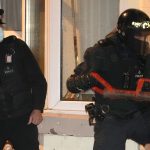Charles III has vowed to follow his mother’s “inspiring example” as he took the oath and swore to serve the people as King.
With the centuries-old ceremony televised for the first time in history, Privy Counsellors, including Prince William and the Queen Consort, Camilla, former prime ministers David Cameron, Gordon Brown and Tony Blair, met at St James’s Palace in London to declare King Charles the new sovereign on Saturday morning.
The ceremony, which dates back to Saxon times, was made available for the public to see for the first time in history. It was also the first time women were allowed to attend – the last council meeting in 1952.
In his personal declaration, the King said: “I know how deeply you and the entire nation, and I think I may say the whole world, sympathise with me in this irreparable loss we have all suffered.”
Cabinet ministers to meet with new King – live updates
Split into two parts, the first saw the Lord President of the Council, Leader of the House of Commons Penny Mordaunt MP, pronounce the death of the Queen in the picture gallery as past and present politicians and religious leaders listened.
“It is my sad duty to inform you that her most gracuoius Majesty, Queen Elizabeth II, has passed away on Thursday 8 Septemnber 2022 at Balmoral Castle,” she said.
The Clerk of the Council then read the Accession Proclamation, which declared King Charles the new monarch, Head of the Commonwealth, and Defender of the Faith (head of the Church of England).
He described the Queen as “our late sovereign lady”.
Declaring Charles III King, he said: “We now hereby with one voice, and consent of tongue and heart, publish and proclaim that Prince Charles Philip Arthur George by the death of the late sovereign of our happy become, be our only lawful and rightful liege, King Charles III, by the grace of God of the United Kingdom of Great Britain and Northern Ireland and his other realms and territories.”
It was signed by the ‘platform party’ – first by Prince William, then Camilla, Queen Consort, followed by Penny Mordaunt, Prime Minister Liz Truss, Lord Chancellor Brandon Lewis MP, the Lord Privy Seal, Earl Marshal, and the Archbishops of Canterbury and York.
The Privy Counsellors then moved to the throne room where the King arrived for the second part, which was effectively the first meeting of the Privy Council under his reign, and saw him make a personal declaration, followed by a Scottish Oath.
This dates back to a time when Catholic Europe was seen as an existential threat to Britain and promises to protect the security of the Church of Scotland, because, unlike in England, church and state are separate there.
Standing before the throne, he said it was his “sorrowest duty” to announce the death of his “beloved mother, the Queen”.
Paying tribute to her, he added: “My mother’s reign was unequalled in its duration, dedication and devotion.
“Even as we grieve we give thanks for this most faithful life.”
Acknowledging his “great inheritance” and “heavy responsibilites” of being passed the monarchy, he added: “I shall strive to follow the inspiring example I have been set.”
The proclamation was then signed, before trumpeters from the Life Guards and drummers from the Coldstream Guards play and it is read aloud on the balcony above Friary Court at St James’s Palace – officially proclaiming Charles III King.
Lord President of the Council, Ms Mordaunt, announced that the Queen’s funeral will be a bank holiday, the date of which will be confirmed later.
Read more on the King:
What we learned from the King’s first speech
Updated line of succession reveals who is now closer to the throne
From bullies to Dian’s death – the events that shaped King Charles
At midday, as is tradition, it will be read aloud again from the Royal Exchange in the City of London.
It will also be read out in Edinburgh, Cardiff, Belfast and other locations across the Commonwealth at the same time on Sunday.
The Accession Council is different to the coronation, which may not be held for some time.
Queen Elizabeth was proclaimed sovereign on her return to London from abroad in February 1952, but was not crowned until June the following year.






















